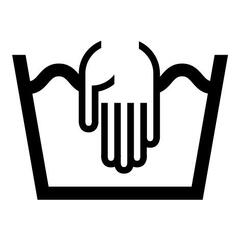Stability:
Our equestrian designers wanted to include a chinstrap as an extra way to keep it stable, since some stability is lost from the mouth. The padding on the back of the noseband is ergonomically shaped so that it sits neatly under the horse's chin, which stops it from turning and keeps it in place at all times. Plus, the raised browband improves the balance on the poll.
Anatomic design:
Our designers have focused on two key points. Firstly, they have made the noseband bigger to distribute the pressure over a larger area. And secondly, they have designed the browband to be pre-shaped and raised by the ears to relieve pressure on the poll.
Reducing rubbing:
During the first few uses, remember to check for signs of the bridle chafing your horse's head.Signs such as a lack of hair or a minor wound can alert you to an incorrectly adjusted bridle.
Design:
This bitless bridle has been designed with smooth lines based on the areas that are most sensitive so that it perfectly suits the horse's anatomy. Its black leather and golden brass fastenings make it especially chic.
Pressure points:
Pressure is distributed differently with a bitless bridle compared with a classic one. On a classic bridle, the pressure points tend to be on the mouth, the bridge of the nose and the poll. Whereas with a bitless bridle, the pressure is mainly on the bridge of the nose and the poll.
Advice from our bridle fitter:
You'll notice that there's a symbol on the browband. Just behind it, there's an NFC chip. Scan it by holding the top of your phone near to the symbol, then click the link that appears. There, you'll find a video of our bridle fitter explaining in detail all of this bitless bridle's special features and how to adjust it correctly and adapt it to fit your horse.
How to check that your bridle is properly fitted
First of all, there are veined areas on the horse's head that, when pressure is applied, will feel uncomfortable, which will distract your horse. The poll and ear area is one of these. When the bridle is correctly adjusted, you should be able to fit 1 finger between the browband and the back of the ears. Secondly, the bridle's cheek pieces should go behind the zygomatic process to avoid the veined parts of this area.
How to check that your bridle is correctly adjusted:
On this bridle, you can adjust the cheek piece, chinstrap and noseband. Although the bridle's lines are different, you adjust it just like a classic bridle. As normal, the cheek pieces should be 2 fingers below the zygomatic process. For the noseband, we recommend leaving 2 fingers of room between the noseband and the bridge of the nose.
Tips for use:
This bitless bridle can be used as a halter, but it is strongly recommended that you do not use it during transport. We also recommend testing it in an enclosed area (riding school, schooling yard, etc.) the first time you use it because if you have any kind of problem or if your horse reacts badly, you'll be able to control the situation more safely.
Compatibility:
This bitless bridle fits all Fouganza reins.
Care advice:
To keep your bridle in good condition, we recommend cleaning it regularly with glycerine soap applied using a sponge dampened with lukewarm water. You can then hydrate your leather with grease applied using a household or special leather cloth. If you feel that the leather is rough and dry, you can also use a hydrating conditioner that will nourish your leather.




